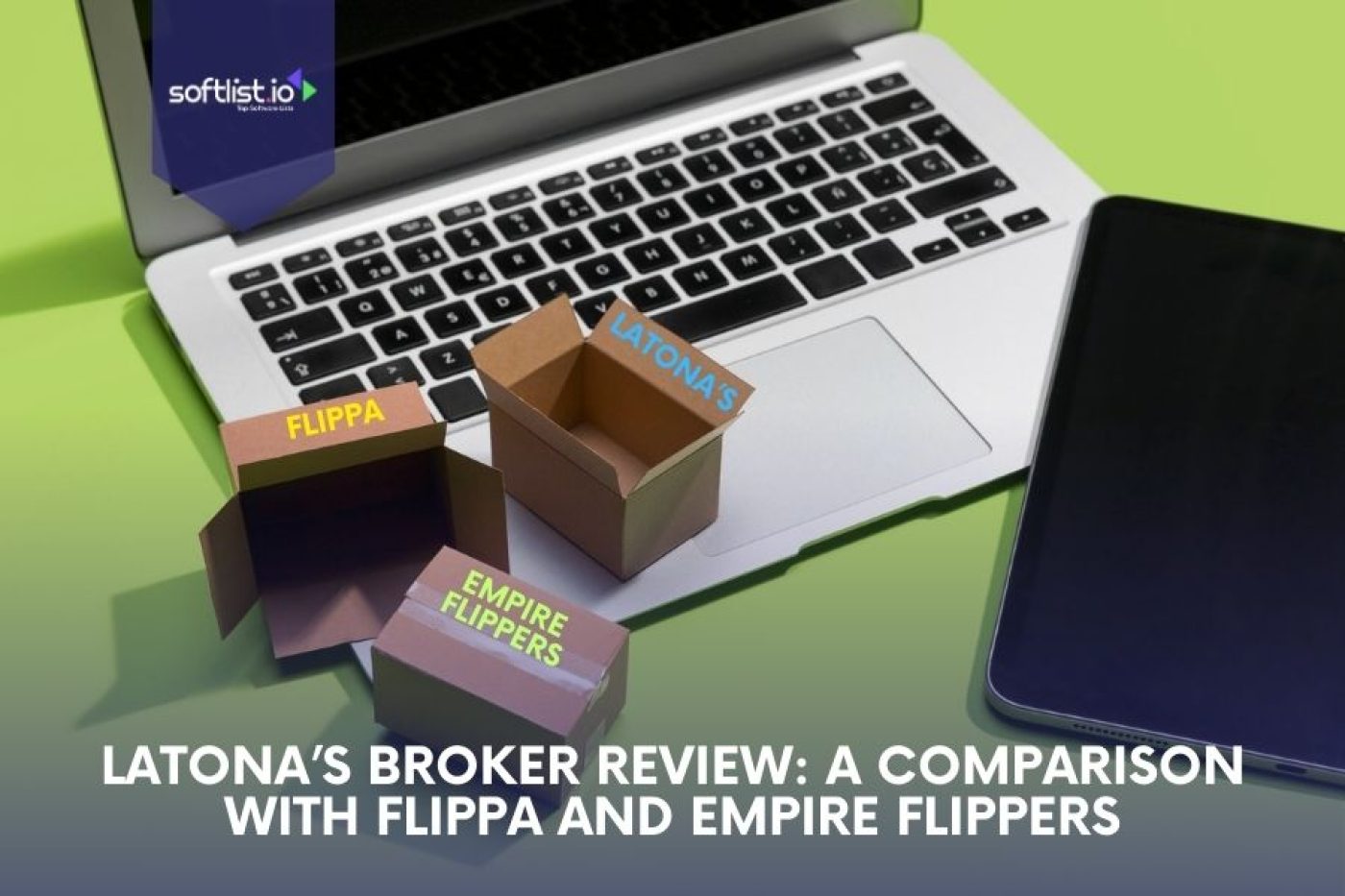
In today’s fast-paced world, staying organized and managing time effectively have become increasingly essential. A robust calendar tool can significantly enhance productivity, streamline schedules, and improve work-life balance. However, selecting the right calendar tool can be an overwhelming task with a plethora of available options.
To simplify this process, we’ve compiled a list of 12 essential criteria to consider while evaluating and choosing the best calendar tool for your needs.
Ease of Use

Ease of use is essential when selecting a calendar tool, as it impacts user experience and overall effectiveness. A user-friendly calendar tool should have a simple interface that is easy for first-time users to understand. Adding, editing, and managing events should be uncomplicated, with clear visual cues and minimal steps needed to complete common tasks. By making these basic functions easy, a calendar tool can save time and effort, leading to better productivity and task management.
On the other hand, a complex calendar tool can be counterproductive. Users may struggle to navigate, understand its features, and manage their events efficiently. As a result, they might spend more time figuring out the tool instead of planning and organizing their schedule. Also, the frustration and inefficiency caused by a problematic tool can discourage users from using the calendar tool to its full potential, reducing its overall value. Therefore, ease of use is vital when searching for the ideal calendar tool.
Features:
- Intuitive Interface: A clean, well-organized interface makes it easy for users to understand and navigate the tool.
- Simple Event Creation: Adding new events should be straightforward, requiring minimal steps or clicks.
- Drag-and-Drop Functionality: Moving or rescheduling events using drag-and-drop features enhances convenience and efficiency.
- Quick Editing: Users should be able to easily edit event details without going through multiple steps or screens.
- Responsive Design: A calendar tool should adapt to different screen sizes and devices, ensuring a consistent user experience across various platforms.
Customization

A high-quality calendar tool should provide many customization options that fit the user’s needs. These options can include adjustable views (day, week, month), color coding, labels, and event categories. Customization lets users make their calendars unique and helps them quickly tell different events apart.
By offering customization, a calendar tool becomes more user-friendly and efficient. Users can quickly identify various event types, making it easier to manage their schedules. This personal touch makes the calendar tool more enjoyable and encourages users to stay organized and plan their time better.
Features:
- Customizable Views: The ability to switch between day, week, and month views allow users to choose the most suitable layout for their needs.
- Color-Coding: Users should be able to assign different colors to events or categories for easy visual identification.
- Event Categories: The tool should allow users to create and assign event categories or labels for better organization.
- Personalization Options: Users should be able to adjust settings such as time zones, display preferences, and notification preferences to suit their needs.
- Custom Reminders: The calendar tool should offer the flexibility to set custom reminders or alerts for events, ensuring timely notifications.
Integration With Other Apps

In today’s digital world, connecting with other productivity tools and apps is crucial for a calendar tool. It should easily link with email clients, project management tools, video conferencing platforms, and social media sites. Integration leads to automatically syncing events, deadlines, and meeting schedules, removing the need to update many tools manually.
Integrating with other apps makes a calendar tool more powerful and efficient. Users can manage their schedules and tasks on the same page, streamlining their workflow and saving time. This seamless connection between tools also helps reduce the risk of errors or missed events, improving overall productivity and organization.
Features:
- Email Integration: The tool should connect seamlessly with email clients, enabling users to create and update events directly from emails.
- Project Management Integration: Syncing with project management tools allows users to manage deadlines and tasks more efficiently within their calendars.
- Video Conferencing Integration: Connecting with video conferencing platforms makes scheduling and joining online meetings more convenient.
- Social Media Integration: The tool should allow users to schedule and manage social media posts or events, streamlining their digital presence.
- Contacts and CRM Integration: Syncing with contact management or CRM tools ensures users can easily invite attendees and access relevant event contact information.
Sharing and Collaboration

A calendar tool should make sharing and working with team or family members simple. This feature helps organize group projects, set up meetings, or plan family events. The tool should let users share their calendars, send event invitations, and control who can see or change the shared calendar.
Easy sharing and teamwork in a calendar tool can improve communication and planning. Users can quickly share their availability and event details, reducing confusion and scheduling problems. As a result, teams and families can work better together, saving time and boosting productivity.
Features:
- Calendar Sharing: Users should be able to share their calendars with others, making it easy to coordinate schedules.
- Event Invitations: The tool should enable users to send event invitations, allowing attendees to confirm attendance.
- Permission Management: Users should control who can view or edit their shared calendar, ensuring privacy and security.
- Group Calendars: The ability to create and manage group calendars can help organize team projects, schedule meetings, or family events more efficiently.
- Real-time Updates: Changes made to shared calendars should be instantly visible to all members, ensuring everyone stays informed and updated.
Reminders And Notifications

A good calendar tool should have adjustable reminders and notifications so users never miss important events, deadlines, or appointments. The tool should provide different ways to get notifications, like email, push notifications, or text messages. Users should also be able to set multiple reminders for an event and choose when they receive them.
Customizable reminders help users stay on track and manage their time effectively. By offering various notification methods, users can pick the one that suits them best, ensuring they remain informed about upcoming events. With multiple reminders and timing options, users can plan and prepare for important events more efficiently, improving their time management.
Features:
- Multiple Reminder Methods: The tool should offer various ways to receive reminders, such as email, push notifications, or SMS.
- Customizable Timing: Users should be able to choose when they receive event reminders, allowing for better preparation.
- Multiple Reminders: The tool should allow users to set more than one reminder for a single event, ensuring they don’t miss necessary appointments.
- Event-Based Notifications: The calendar tool should send notifications for event updates, such as time or location changes, keeping users informed.
- Reminder Presets: Users should be able to create and apply preset reminder settings for different event types or categories, streamlining the reminder setup process.
Offline Access

Offline access is vital, particularly for users who might not always have internet access. A calendar tool should let users see and change their calendar when they are offline. Changes made while offline should sync with the online calendar automatically when the user connects to the internet again.
Having offline access ensures users can manage their schedule anytime, anywhere. This feature is crucial for staying organized and up to date even in situations with limited internet connectivity. The calendar tool maintains a consistent and accurate schedule by automatically syncing changes when users reconnect, keeping users on track and well-informed.
Features:
- View Calendar: Users should be able to view their calendars and events without an internet connection.
- Edit Events: The tool should allow users to create, edit, or delete offline events.
- Automatic Sync: Changes made offline should automatically sync with the online calendar once the user reconnects to the internet.
- Reminder Support: The calendar tool should continue providing reminders and notifications for events, even offline.
- Seamless Transition: The user experience should remain consistent when switching between online and offline modes, ensuring a smooth and uninterrupted workflow.
Cross-Platform Compatibility

A flexible calendar tool should work with different devices and platforms, like Windows, macOS, Android, and iOS. Compatibility with various platforms means users can reach their calendar from any device, anytime, anywhere. This feature makes it more convenient and helps increase productivity.
Cross-platform compatibility is essential for users who switch between devices or use multiple devices simultaneously. With a calendar tool that works on various platforms, users can keep their schedules updated and stay organized, regardless of device. This compatibility leads to a seamless calendar experience and improved time management.
Features:
- Multiple Platform Support: The tool should be compatible with various operating systems, such as Windows, macOS, Android, and iOS.
- Consistent User Experience: The calendar tool should provide a similar user experience across different devices and platforms.
- Seamless Syncing: The tool should automatically sync calendar data across devices, ensuring users have up-to-date information.
- App Availability: The calendar tool should offer dedicated apps or web-based access for different platforms, allowing users to access their calendars from any device.
- Platform-Specific Features: The calendar tool should optimize its features and functionality to work effectively on each supported platform, maximizing user efficiency and convenience.
Scalability

Scalability is crucial, particularly for growing organizations or people whose needs might change over time. A calendar tool should handle more users, events, and integrations as the user’s demands grow. Scalable tools can save time and money because users don’t need to switch to new tools or pay for costly upgrades often.
A scalable calendar tool benefits users by adapting to their changing needs. As a business grows or an individual’s schedule becomes busier, the calendar tool should continue to offer efficient organization and management. Scalable tools are more cost-effective in the long run, preventing users from having to search for new solutions when their needs expand.
Features:
- User Capacity: The tool should accommodate growing users without compromising performance or functionality.
- Event Volume: The calendar tool should handle increasing events and appointments as the user’s schedule becomes busier.
- Integration Expansion: The tool should support the addition of more integrations with other apps and services as the user’s needs evolve.
- Flexible Pricing Plans: The calendar tool should offer pricing plans that cater to different usage levels, allowing users to upgrade as their requirements grow.
- Performance Stability: As the user base and calendar event volume grow, the calendar tool should maintain its performance and reliability, ensuring a consistent user experience.
Security And Privacy

Since calendar tools often hold sensitive details about users’ personal and work lives, security and privacy are crucial. A reliable calendar tool should have robust security features like data encryption, two-factor authentication, and secure password management. It should also have a clear privacy policy explaining how user data is gathered, stored, and used.
Users need to trust that their calendar tool will protect and keep their information private. By providing solid security measures and transparent privacy policies, calendar tools can ensure users feel confident using the service. Prioritizing security and privacy helps maintain user trust and fosters a reliable calendar experience.
Features:
- End-to-end encryption: Ensure that your calendar tool supports end-to-end data transmission and storage encryption to protect sensitive information from unauthorized access.
- Access controls: Robust user access controls, including multi-factor authentication and customizable permissions, will help prevent unauthorized access to your calendar data.
- Data privacy policies: Choose a calendar tool with clear, comprehensive privacy policies that outline how your data is collected, used, and shared and comply with relevant privacy regulations.
- Data storage and backup: Opt for a tool that stores your data securely, with robust encryption and backup options, to prevent loss or corruption of calendar data.
- Security updates and audits: Regular and third-party audits will ensure that the calendar tool stays up-to-date with the latest security standards and best practices.
Customer Support

A calendar tool that provides outstanding customer support can significantly enhance user experience and help resolve problems efficiently. Choosing a tool with various customer support channels like email, live chat, and phone support is advisable. It ensures you can seek assistance through your preferred method and receive prompt help when needed.
A well-organized knowledge base containing tutorials, FAQs, and troubleshooting guides is also essential. This resource enables users to navigate the tool and address common issues independently. In summary, prioritizing a calendar tool with multiple support channels and a comprehensive knowledge base will ensure a smoother and more satisfying user experience.
Features:
- Multiple support channels: Ensure the calendar tool offers various customer support options like email, live chat, and phone support for easy access.
- Responsiveness: Opt for a tool with a track record of timely and effective customer support to address issues promptly.
- Knowledge base: A comprehensive knowledge base with tutorials, FAQs, and troubleshooting guides helps users resolve common issues independently.
- 24/7 availability: Choose a tool with round-the-clock customer support to ensure available assistance, regardless of time zones.
- Skilled support staff: Prioritize online calendar tools with knowledgeable and friendly support teams who efficiently address technical and usage-related queries.
Pricing and Plans

The price of a calendar tool plays a significant role, especially for budget-conscious individuals and organizations. Assess different pricing plans and select the best value based on your unique requirements. Some calendar tools provide free versions with limited capabilities, serving as a helpful starting point for users who wish to try the tool before investing in a paid plan.
When considering a tool’s affordability, consider any extra expenses like add-ons or premium features. In summary, it’s essential to weigh the cost and value of each calendar tool to make an informed decision that aligns with your needs and budget constraints.
Features:
- Affordability: Choose a calendar tool with pricing plans that fit your budget while offering the needed features.
- Free calendar app version: Opt for a tool that offers a free version with limited features to test its functionality before committing to a paid plan.
- Scalability: Select a calendar tool with various pricing plans to accommodate your needs as they grow or change.
- Transparent pricing: Ensure the tool’s structure is clear and straightforward, without hidden fees or unexpected costs.
- Value for money: Evaluate the balance between the tool’s cost and the features it provides to determine the best value for your specific needs.
User Reviews And Testimonials

Finally, invest time in researching user reviews and testimonials to understand the experiences of others with the calendar tool. Seek feedback from users with similar needs to better gauge if the tool suits your requirements. Remember, no tool will receive exclusively positive reviews, so concentrate on identifying common trends and recurring problems to make a well-informed choice.
User reviews provide valuable insights into a tool’s performance, strengths, and weaknesses. These will help you select a calendar tool that aligns with your needs and expectations, ensuring a satisfactory user experience.
Features:
- Relevance: Focus on reviews from users with similar needs and requirements to better assess the tool’s suitability for your situation.
- Common trends: Identify recurring themes or issues mentioned in reviews to understand the tool’s strengths and weaknesses.
- Credible sources: Seek out reviews from reliable platforms and verified users to ensure the authenticity of the feedback.
- Overall satisfaction: Gauge the general user satisfaction by considering the balance of positive and negative reviews.
- Support experience: Pay attention to user experiences with customer support to assess the tool’s responsiveness and helpfulness in resolving issues.
FAQs

Can I manage multiple calendars in one app?
Yes. Most calendar apps, including Google Calendar, Apple Calendar, and Outlook, allow you to manage multiple calendars within the same app, with options to view and edit each calendar separately or combine them into one view.
Are there calendar apps specifically designed for teams and collaboration?
Yes. Some calendar apps, like Zoho calendar, Asana and Trello, are designed for team collaboration and include features like shared calendars, project management, and task assignments.
Can calendar tools automatically adjust events for different time zones?
Yes. Most calendar tools have built-in support for time zone adjustments. They can display event times according to the user’s local time zone and automatically update when traveling to different time zones.
Can I share specific calendar events without revealing my entire calendar?
Yes. Some calendar tools allow you to share individual events without exposing your entire calendar. You can typically send event invitations or share a unique link for a specific event.
Can I attach files or documents to calendar events?
Many calendar tools, including Google Calendar and Microsoft Outlook, allow you to attach files or documents to events. This feature can help share meeting agendas, presentation slides, or other relevant materials.
Can I integrate a customizable scheduling tool with my existing calendar app?
Most scheduling tools can integrate with popular calendar apps like Google Calendar, Apple Calendar, and Outlook, allowing for seamless syncing of appointments and events between platforms.
Final Thoughts

Selecting the ideal calendar software is a crucial decision that can significantly impact your productivity and organization. By carefully considering the 12 criteria outlined in this guide, you can narrow your options and choose the calendar tool that best meets your unique needs and preferences. Remember, the best calendar apps are the one that seamlessly integrates into your daily routine, enhances your productivity, and simplifies your life.
Having gained valuable insights into the important aspects to consider when selecting a calendar tool, we invite you to explore our website further. You will find extensive information, in-depth reviews, and recommendations to guide you toward the most well-informed decision possible.






